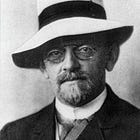How to Find the Eigenvalues and Eigenvectors of an Operator
Solution to Question 5 of the ongoing quantum challenge.

In my previous post, I challenged you with six questions to help you strengthen the mathematical concepts that you need to master Quantum computing.
Let’s discuss the 5th question and solve it step by step using everything we have learned previously.
The question goes like this:
The Pauli-Y operator is defined as:
Find its eigenvalues and corresponding normalized eigenvectors.
Let’s solve this step by step.
What Are Eigenvectors?
Given a square matrix A of size n x n, an Eigenvector is a non-zero vector v that, when multiplied by A, results in a scalar multiple of itself.
Eigenvectors multiplied by A just scales (stretches or compresses) them without rotation or change in direction.
Check out the following equation. The scalar λ in this equation is called the Eigenvalue.
Eigenvalue λ represents how much the eigenvector v is scaled (stretched or shrunk) by the transformation defined by the matrix A.
where:
Ais the square matrixvis the eigenvector of the matrixAλis the eigenvalue of the matrixA
In quantum mechanics, the square matrix A can represent Operators.
Operators are mathematical transformations that act on a quantum state to produce another quantum state.
If you’re looking for a detailed introduction to Eigenvectors, Eigenvalues, and Operators, the following lesson will help.
How to Calculate the Eigenvalues of Pauli-Y
Keep reading with a 7-day free trial
Subscribe to Into Quantum to keep reading this post and get 7 days of free access to the full post archives.




